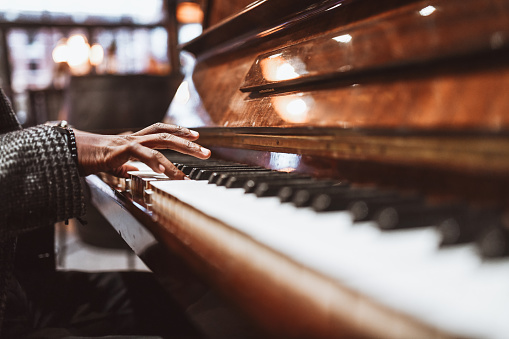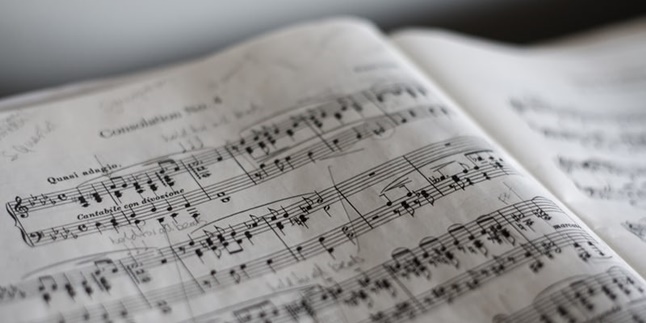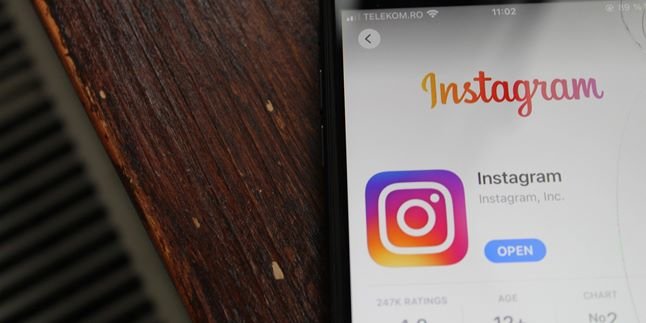Kapanlagi.com - Who doesn't like listening to music? Almost everyone enjoys doing it. But, did you know that the beautiful music you hear has many elements in it? One of these elements is tempo. So, in order to produce melodious music, musicians must be able to read tempo signs. So, what is the meaning of tempo signs?
In general, tempo is a part of music that is closely related to the speed of the rhythm of a song. Therefore, the ability to read tempo signs is very important in creating music. For those who are involved in the field of music, they are certainly familiar with the meaning of tempo signs. However, it is different for ordinary people who are just music enthusiasts.
Instead of being curious, what is the meaning of tempo signs? Let's directly take a look at the following review that Kapanlagi.com has summarized from various sources.
1. What is the Meaning of Tempo Mark

(credit: unsplash)
Before knowing the meaning of tempo mark, first we need to understand what is meant by tempo in music. As mentioned earlier, tempo is an important element in music. Because tempo will determine the speed at which a music or song is sung or played. So based on this understanding, the meaning of tempo mark is a symbol used as a reference for the fast or slow pace of a music.
More specifically, a music professor named Allen Winold explains his opinion about tempo marks. In his book titled "Introduction to Music Theory", tempo mark is defined as the speed of beats or beats per minute in music. In addition, in the Music Dictionary by Pono Banoe, the meaning of tempo mark is also explained as the time and speed in a certain measure in music.
In music, tempo marks greatly influence the atmosphere brought by the song. Fast tempo songs will be sung with joy and enthusiasm. Meanwhile, songs with a moderate tempo will be more impressive. On the other hand, slow tempo songs are used to sing sad, soulful, and romantic songs.
2. Characteristics of Tempo Signs
To better understand the meaning of tempo signs, you also need to know their characteristics. Yes, the presence of tempo in a song can be seen based on its characteristics. Here are some characteristics of tempo signs in a piece of music.
1. Tempo is always written in the composition
Tempo is one of the important parts of a piece of music or song. Therefore, tempo is usually placed at the top of the music composition text. The purpose is to let the players know how the music should be performed. For notation, tempo can be written in musical notes or numeric notation.
2. Using different designations
There are three types of tempo designations in the world of music, namely using BPM or beats per minute, using the Italian method, and finally using the modern method.
3. Arranged using a metronome
Measuring or setting tempo cannot be done arbitrarily. To measure it, a special counting device called a metronome is usually used. Therefore, the result of the tempo count is usually written as MM, which stands for metronome malzel.
3. Types of Tempo Signs

(credit: unsplash)
Learning the meaning of tempo would not be complete without knowing its types. Apparently, tempo signs come in several types and levels. Here are the types and levels of tempo signs.
1. Slow Tempo Signs
Slow tempo signs are divided into four levels, including:
1) Grave tempo is very slow and solemn (40-44 M.M).
2) Largo tempo is slow and solemn (46-50 M.M).
3) Adagio tempo is slightly faster than largo tempo (52-54 M.M).
4) Lento tempo is very slow (56-58 M.M).
2. Moderate Tempo Signs
Moderate tempo signs are divided into four levels, including:
1) Adante is the tempo as fast as walking speed, which is 72 to 76 M.M.
2) Andantino is a tempo faster than adante, which is 80 to 84 M.M.
3) Maestoso is a grand and noble tempo, which is between 88 to 92 M.M.
4) Moderato is a moderate tempo, which is between 96 to 104 M.M.
3. Fast Tempo Signs
Fast tempo signs are divided into four levels, as follows:
1) Allegretto is a somewhat fast and cheerful tempo (108 to 116 M.M).
2) Allegro is a fast, lively, and cheerful tempo (132 to 138 M.M).
3) Vivace is a lively and cheerful tempo (160 to 176 M.M).
4) Presto is a fast tempo (184 to 200 M.M).
4. How to Determine Tempo Count

(credit: unsplash)
The tempo indication in a song cannot be determined arbitrarily. Tempo is counted based on beats per minute (BPM). This BPM unit indicates how fast or slow a song is played. The existence of BPM tempo facilitates the process of recording a song.
For example, when a song is played with a tempo of 60 BPM. It means that there will be 60 beats in one minute. Meanwhile, for example, if a song has a tempo of 120 BPM, then the number of beats will be twice as much.
Those are some explanations about the meaning of tempo indication. Hopefully, it is useful and can increase knowledge!
(kpl/gen/psp)
Disclaimer: This translation from Bahasa Indonesia to English has been generated by Artificial Intelligence.















